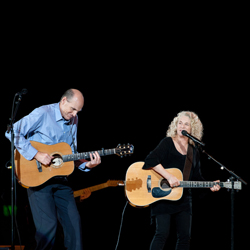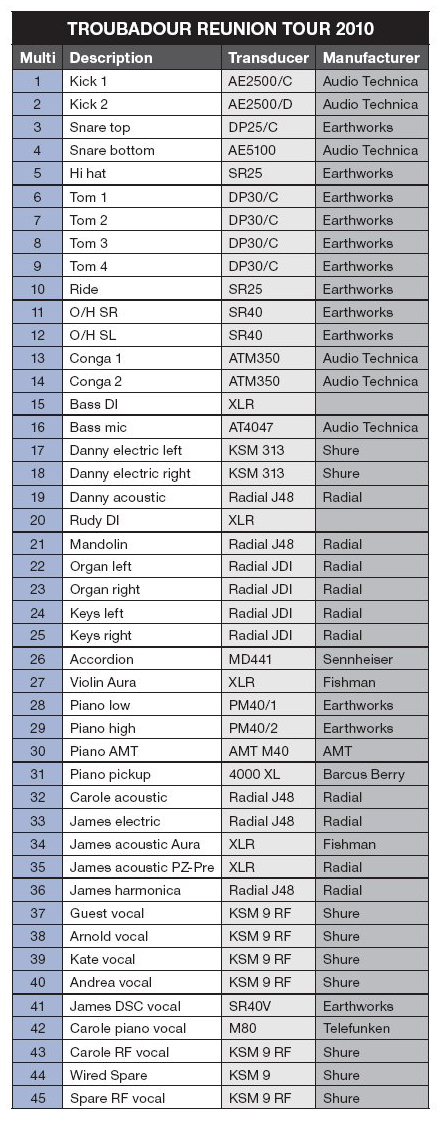
Enhancing The Intimacy
By taking a four-stereo-PA approach to the matter, Morgan knew he would gain a consistency throughout the house that he certainly couldn’t achieve with a proscenium-style PA.
He also realized that it was equally important that the frequency response of the arrays remain in check so that the environment wouldn’t become overexcited from sound being pushed out in all directions within the spherical context of the design.
That would detract from, rather than enhance the intimacy of the experience, and make people feel like they were really in a barn.
A series of concentric rings extending out from the stage suspended lighting, video, and PA elements.
Developed prior to and then refined during rehearsals in Boise, Idaho, a shared vision of how the PA should take shape sprung from the collaborative efforts of Morgan and Clair Brothers’ Andy Sottile, Ron Borthwick, Jim Meyer, Jeff Coleman, and Howard Page.
In total, 96 Clair i-3 line array modules were brought to the tour along with 25 of the sound company’s BT-218A subwoofers (which were both flown and groundstacked), a half-dozen i-5B subs that resided under the stage, and 32 FF-2R ribbon-loaded front fills.
For the house, eight clusters of 12 were hung to build the four stereo PAs, spaced between eight 20 x 12 video screens approximately 15 feet outside of the circumference of the round stage.
“That left an area between the stage and PA that was dead,” Morgan points out, “and that’s where the high-dollar VIP seats were. So we had to come up with a concept to cover these seating areas without impairing the performance onstage.
That’s where the FF-2R front fills came in. Placed on a shelf around the circumference of the inner ring and hung from the railings outside the VIP seating pods, the cabinets were able to cover the area well with enough volume, plus good definition and fidelity.
Subs under the stage made the package complete – audio was seamless as you walked out of the PA and into the focus of the front fills.”
Amplification for the house and front fill arrays was provided by brand-new Lab.gruppen PLM 20000Q units, each outfitted with four channels of power rated at 5,000 watts apiece and a pair of Lake processing modules.
With each amp powering a pair of boxes in an i-3 array, pages of zonal coverage occupied the computer at front of house running the system’s Lake software.
As an aid to keeping order during setup, cabling and amp assignments on the system blueprint were mapped out in color coding mimicking that found on resistors.
“It was brown, red, orange, yellow, green, blue, purple, and grey,” Morgan says, ticking off the sequence in rapid fire.
“Each color corresponded to a particular section of the rig – yellow and green were for arrays on the south side, for example, blue and purple on the west. That made it easy for us sound guys to remember.”

